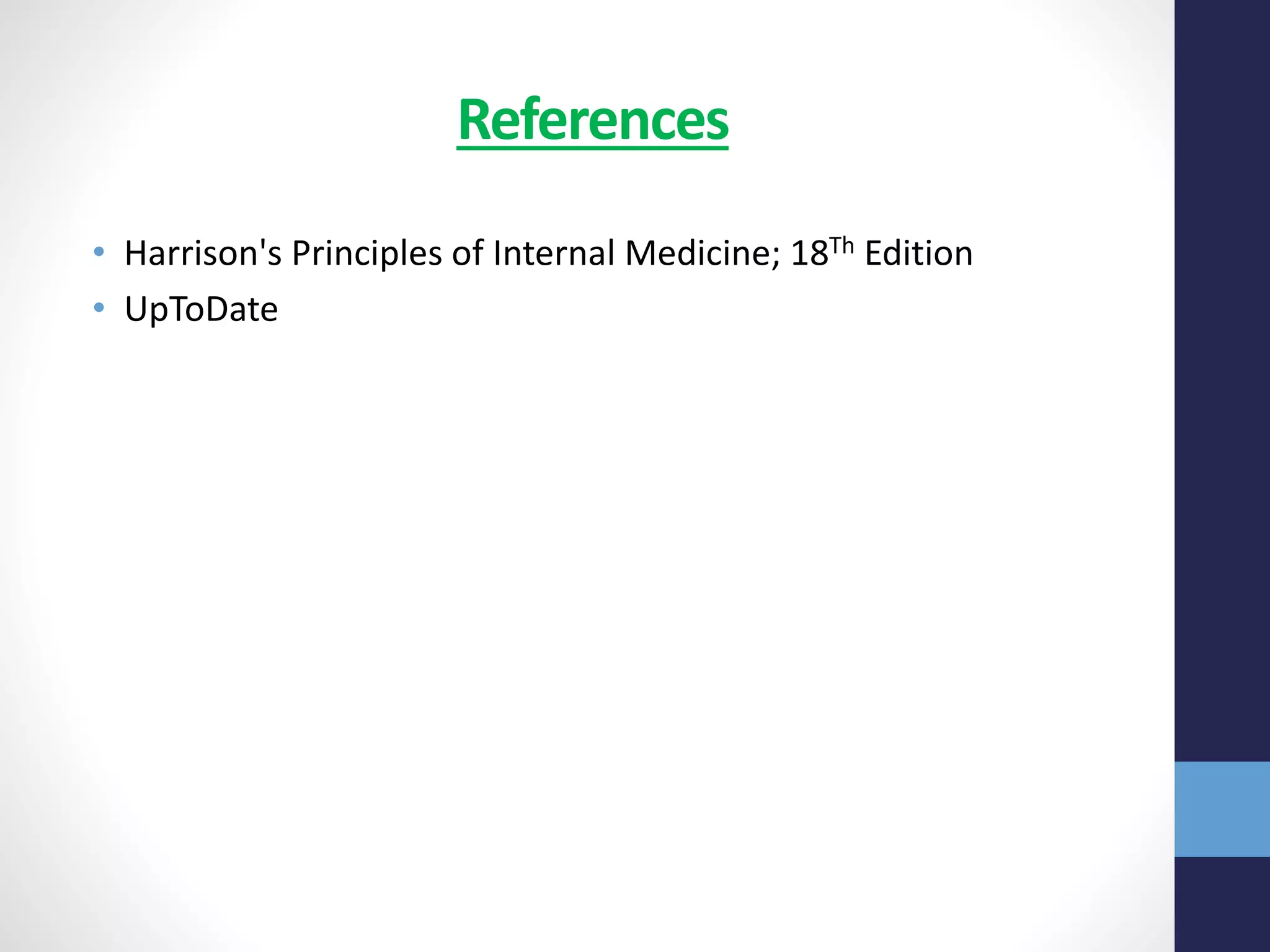Bronchiectasis is a condition characterized by the irreversible dilation of airways, categorized into cylindrical, varicose, and cystic forms, often resulting from both infectious and non-infectious causes. Clinical features include a persistent productive cough, sputum production, and breathlessness, with a diagnosis supported by imaging and sputum analysis. Treatment focuses on infection control, improving airway clearance, and managing exacerbations, with considerations for surgery or lung transplantation in advanced cases.
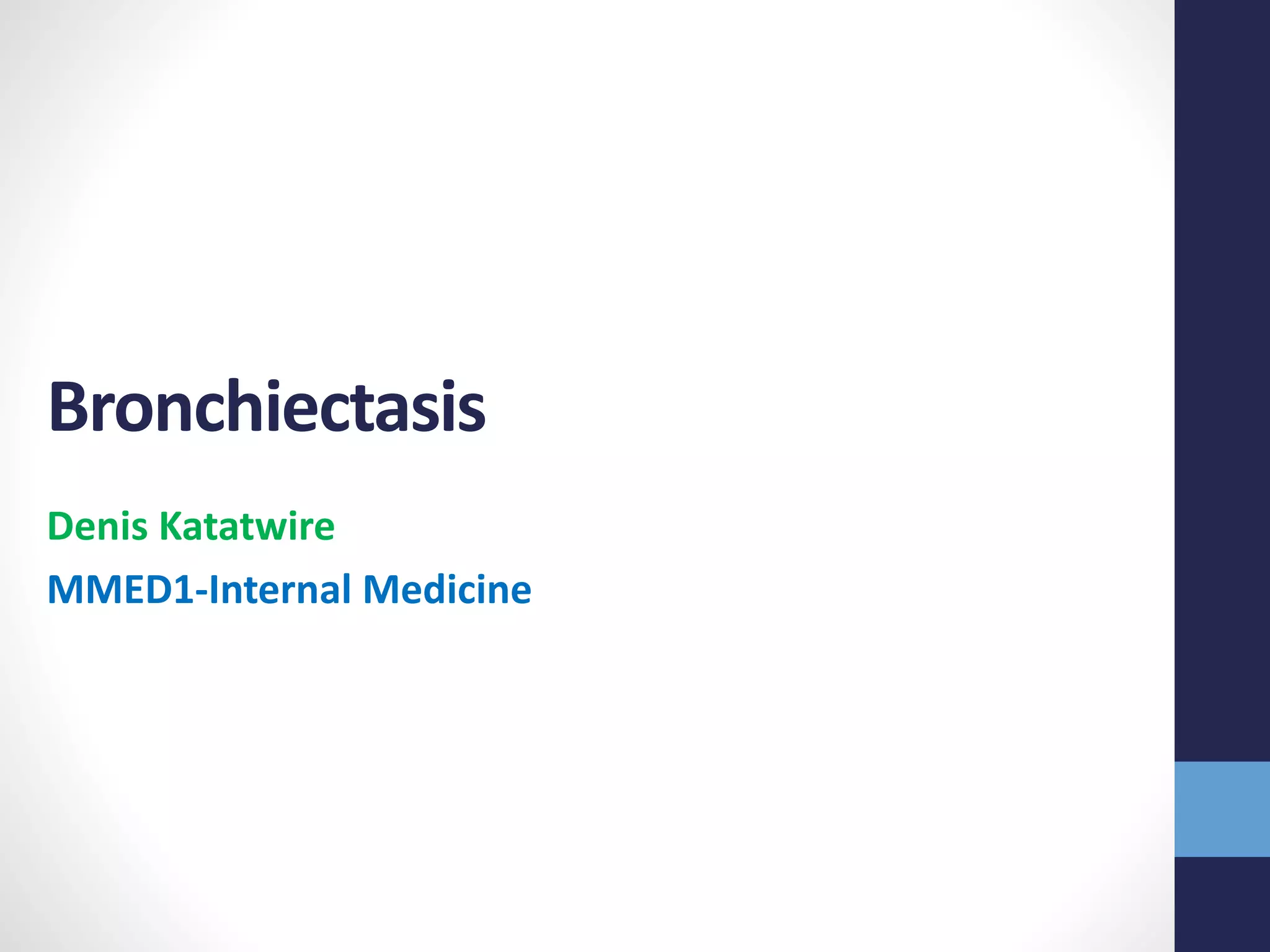
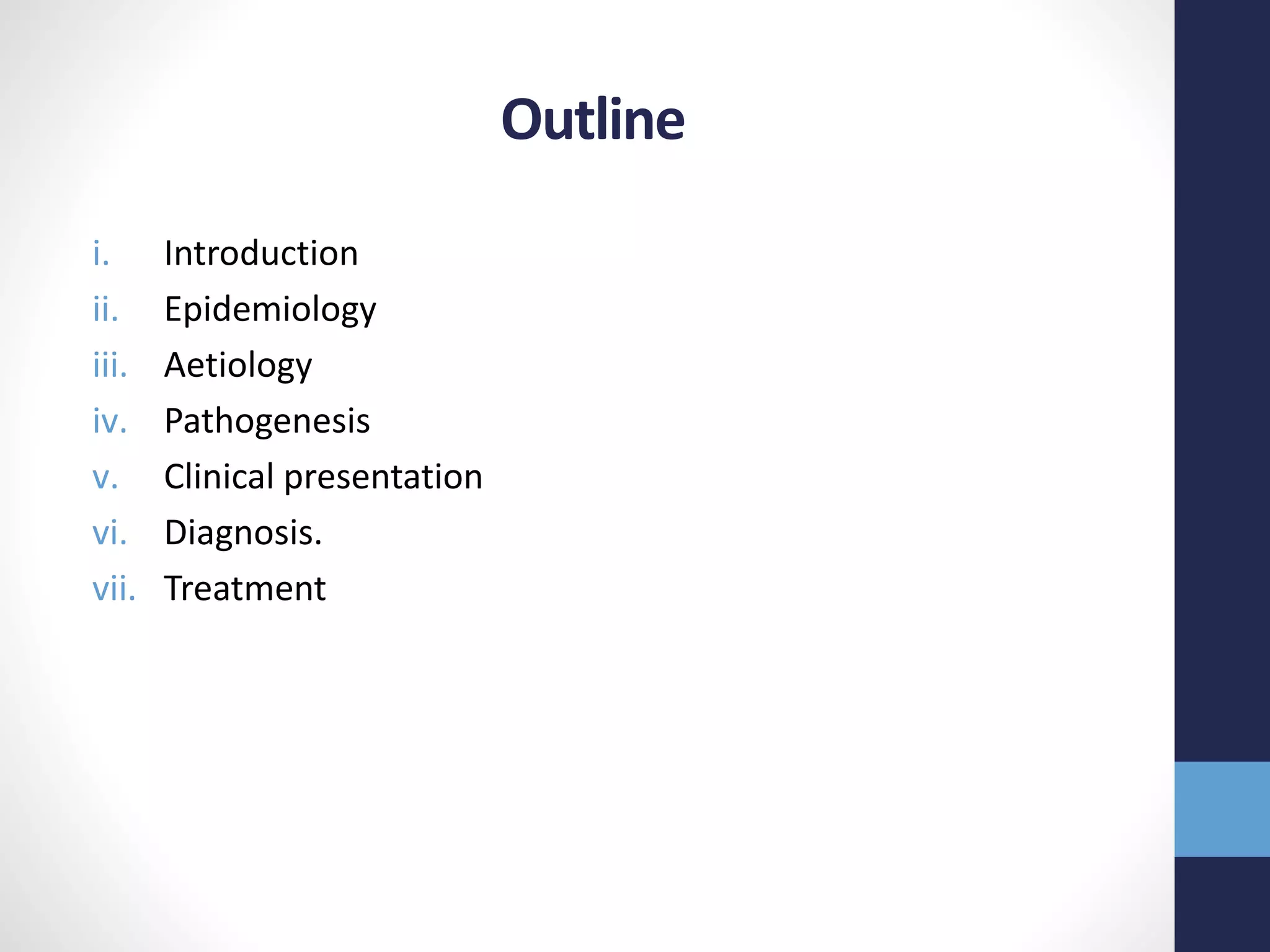
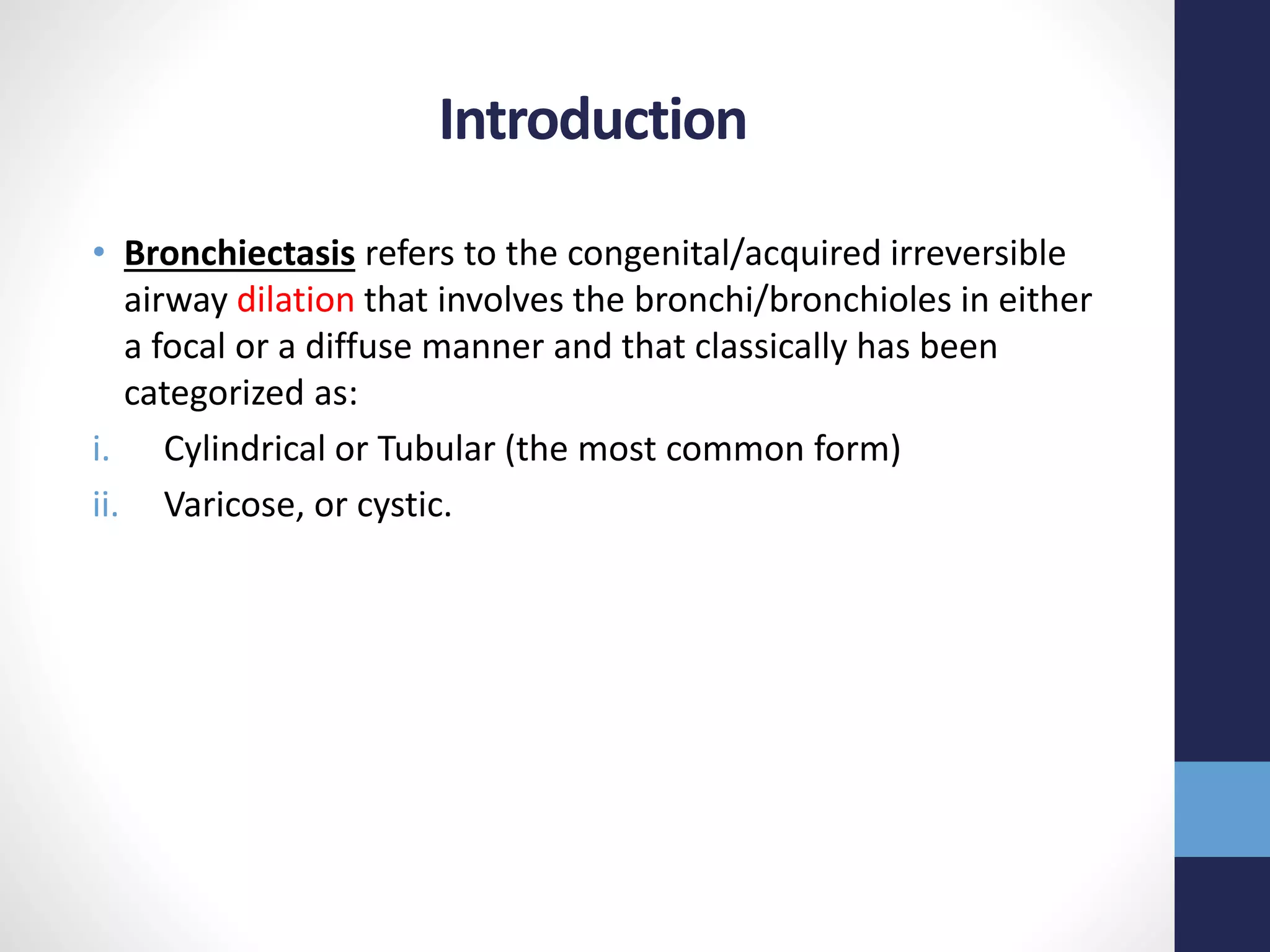
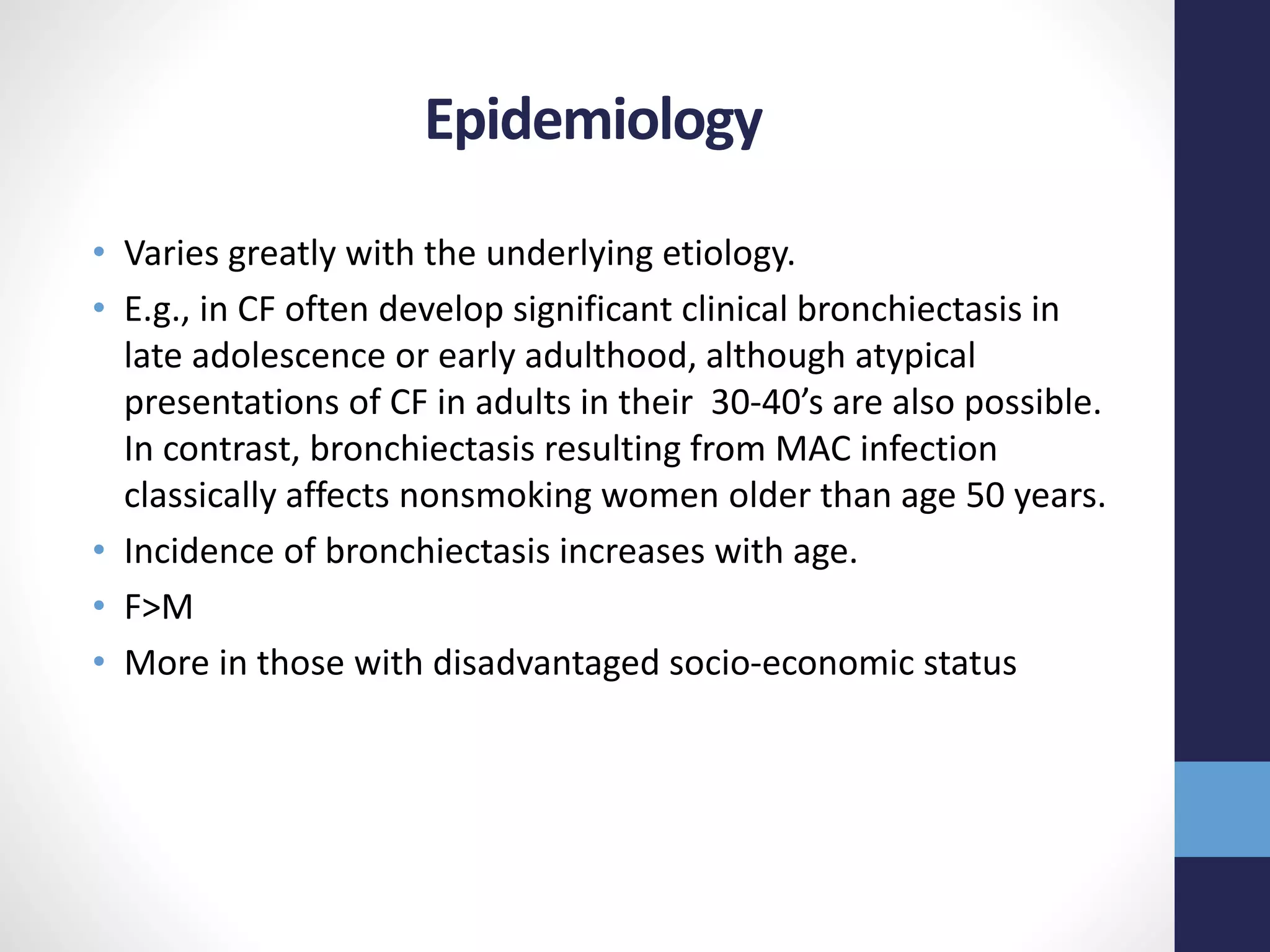


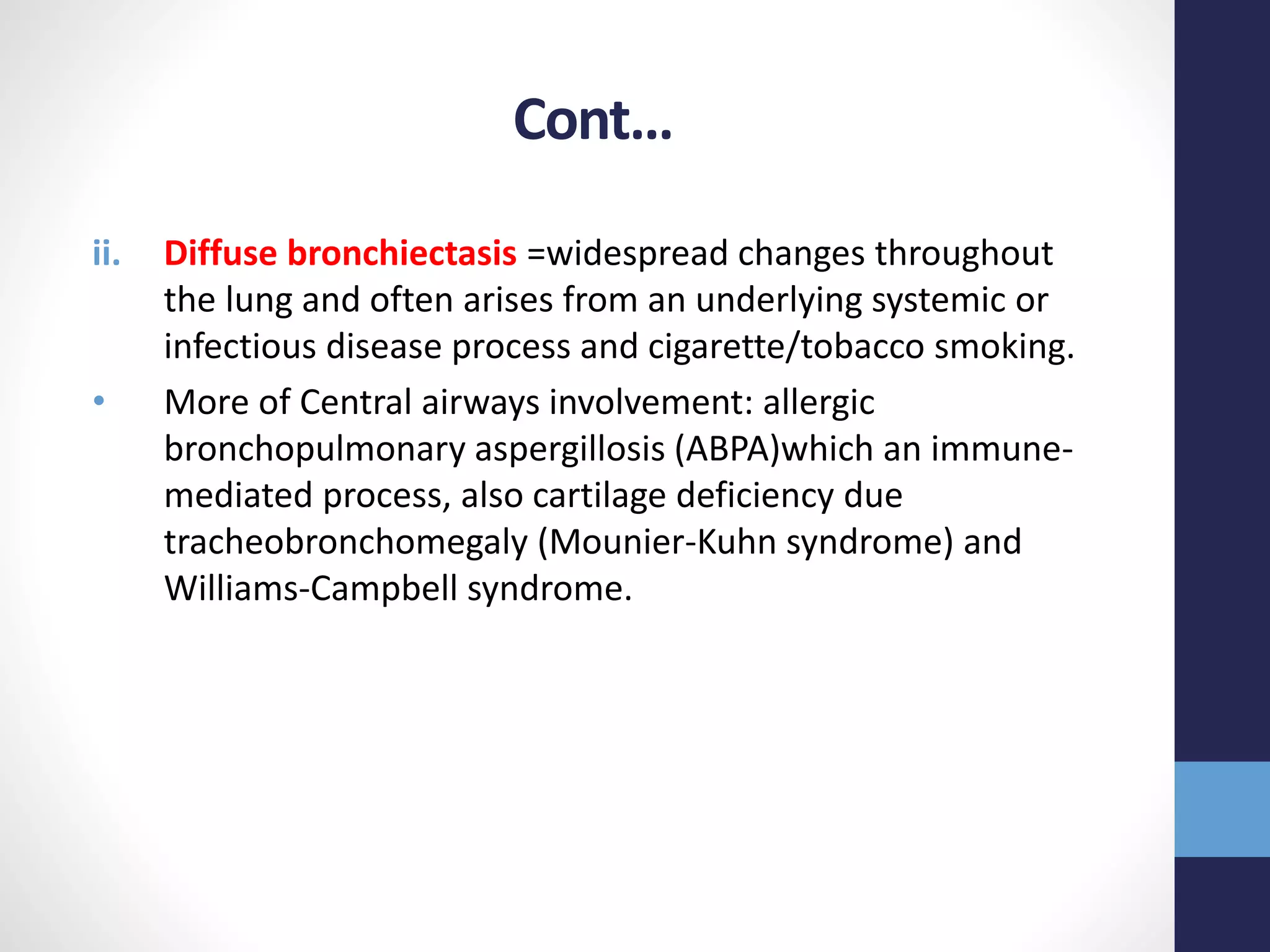

![Pathogenesis
• The most widely cited mechanism of infectious bronchiectasis
is the “vicious cycle hypothesis,” in which susceptibility to
infection and poor mucociliary clearance result in microbial
colonization of the bronchial tree.
• The ensuing host response, immune effector cells
(predominantly neutrophils), neutrophilic proteases (elastase),
reactive oxygen intermediates (eg, hydrogen peroxide
[H2O2]), and inflammatory cytokines, creates transmural
inflammation, mucosal edema, cratering, ulceration, and
neovascularization in the airway](https://image.slidesharecdn.com/bronchiectasis-200801134915/75/Bronchiectasis-9-2048.jpg)






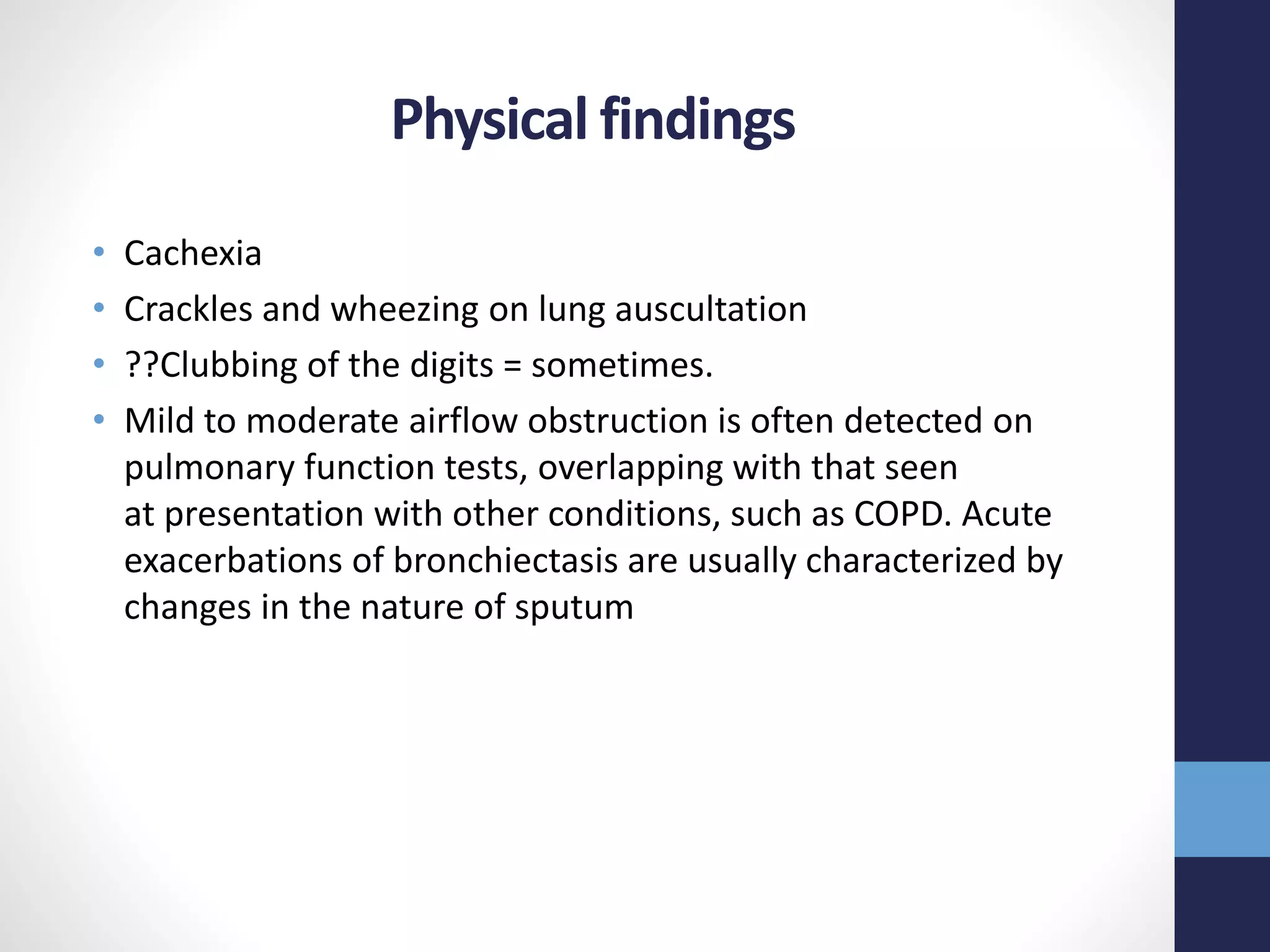
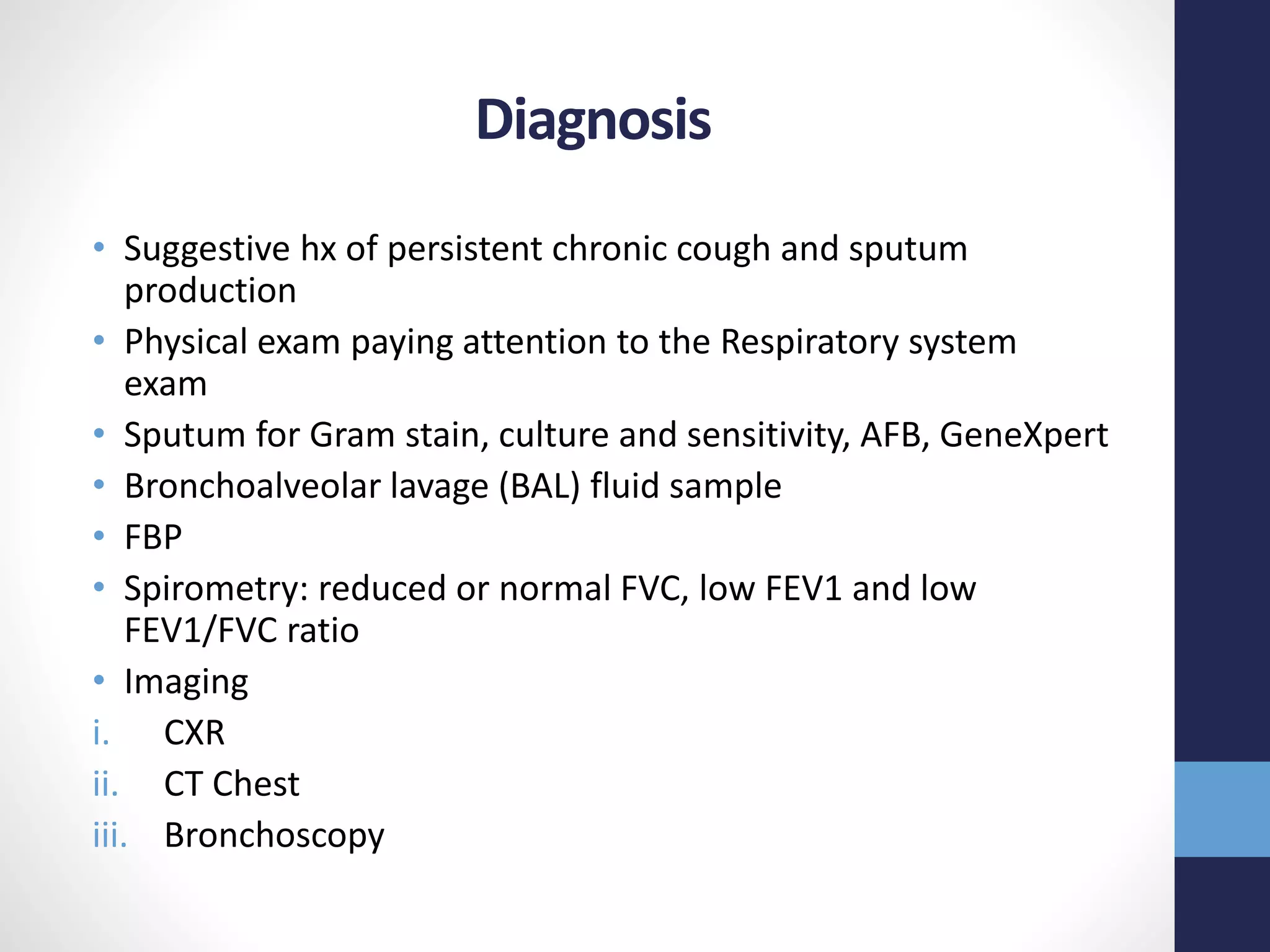






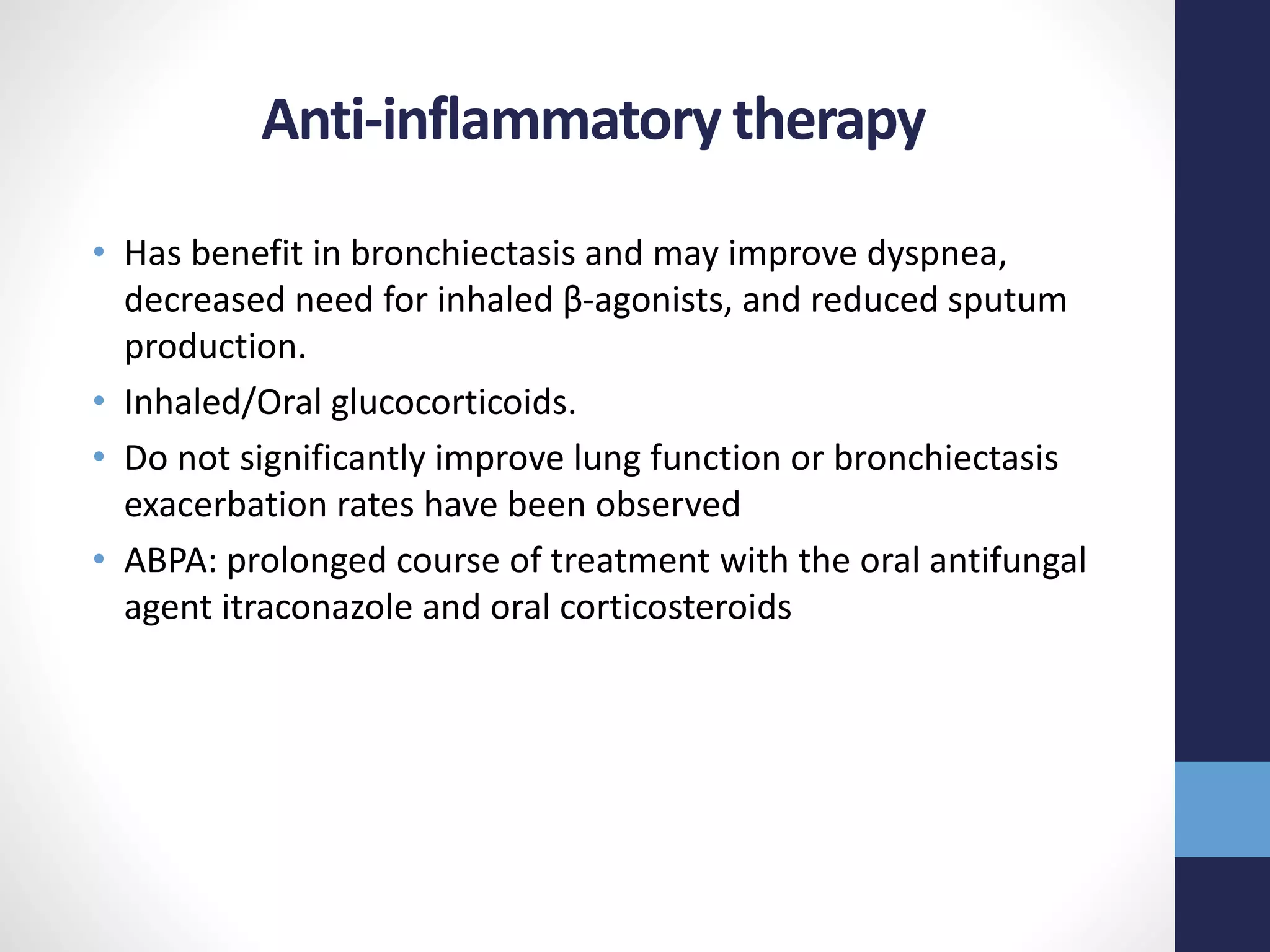


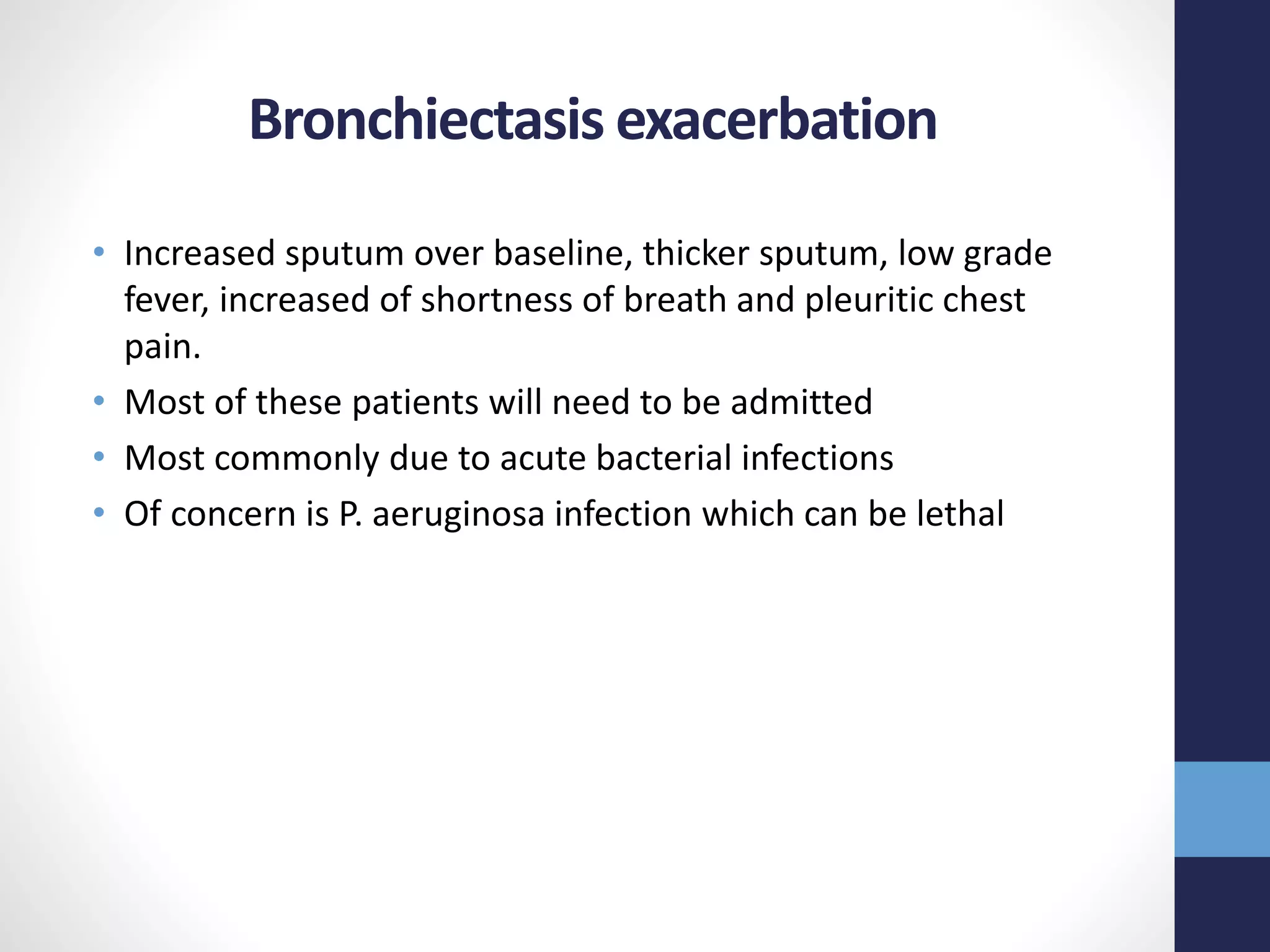

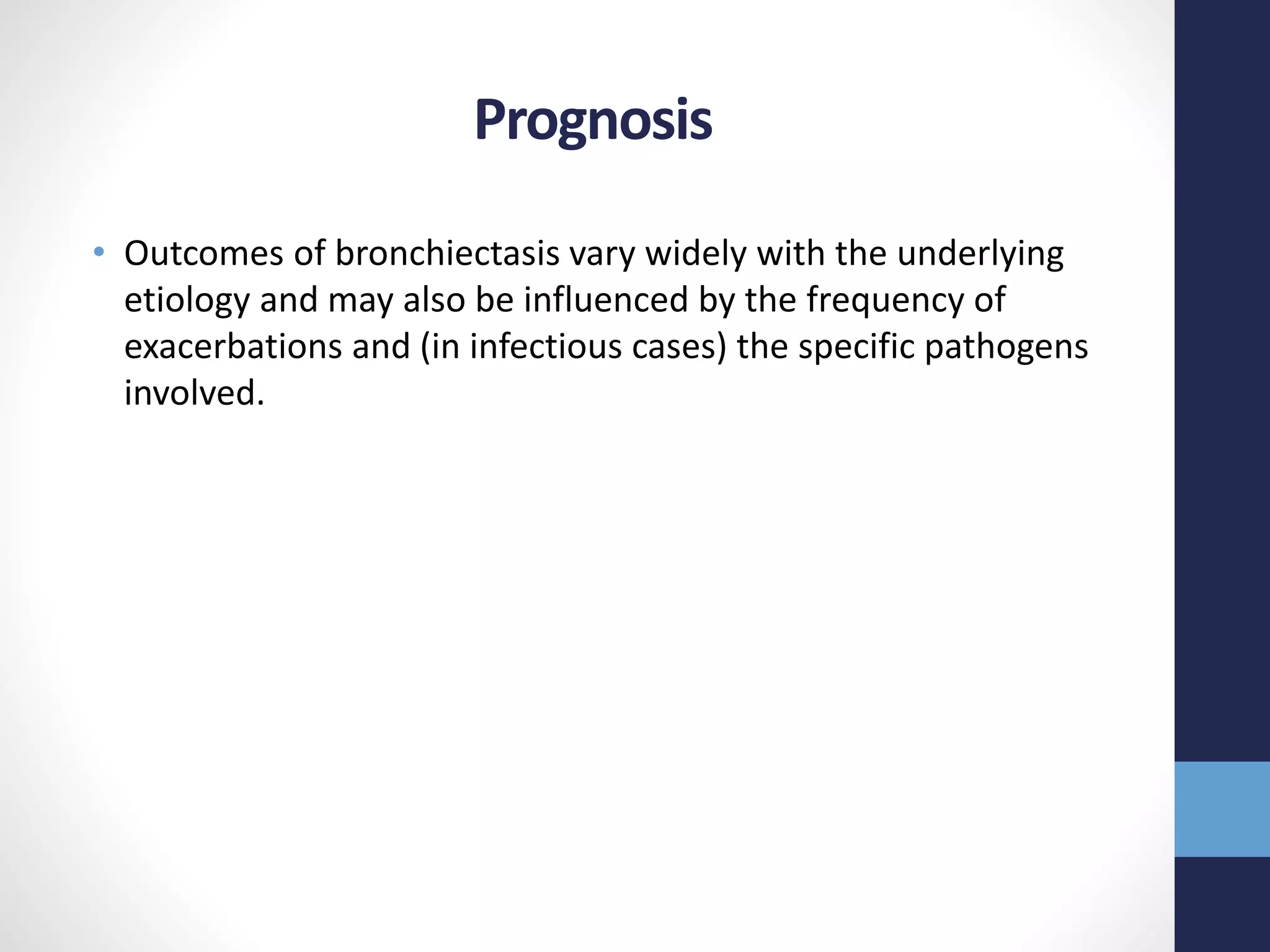


![Cont…
iv. inhalation of aerosolized antibiotics [e.g., tobramycin
inhalation solution (TOBI)] by select patients on a rotating
schedule (e.g., 30 days on, 30 days off) with the goal of
decreasing the microbial load without encountering
the side effects of systemic drug administration
v. Intermittent administration of IV antibiotics (e.g., “clean-
outs”) for patients with more severe bronchiectasis and/or
resistant pathogens. In addition, ongoing, consistent
attention to bronchial hygiene can promote secretion
clearance and decrease the microbial load in the airways.](https://image.slidesharecdn.com/bronchiectasis-200801134915/75/Bronchiectasis-32-2048.jpg)
